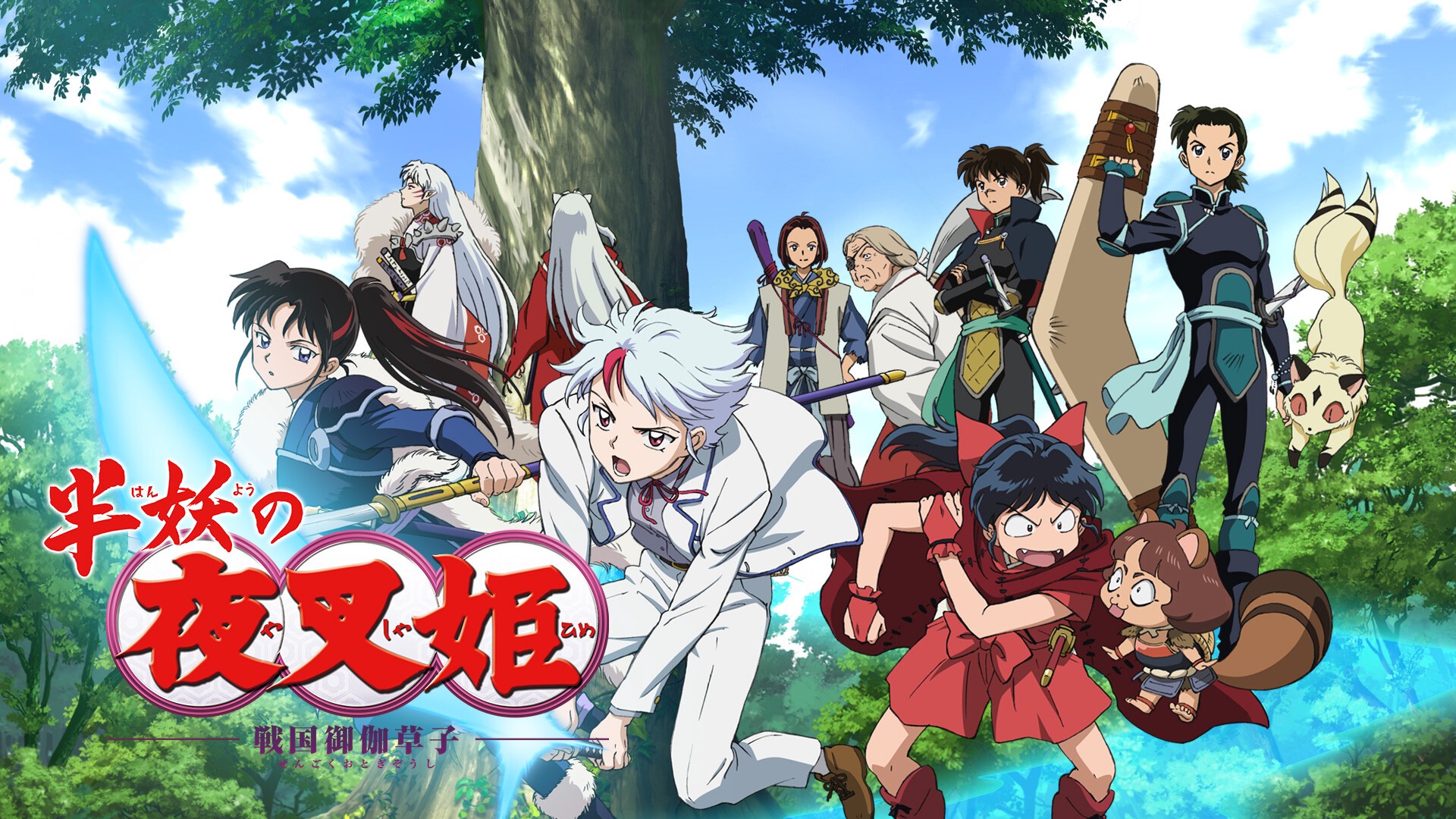Table of Contents Show
This past summer, I was delighted to see the sequel to my beloved childhood manga Inuyasha was finally being aired in October of 2020. Many fans raved over the series after confirming it’s newest protagonists were daughters of our favorite dog- demon brothers, Inuyasha, and Sesshomaru. What fans didn’t know was just how much woman power they were in for. Our incredible new heroes uphold the initial integrity of the show’s fantasy aspects, constant fight scenes, and comedic relief and bring a fresher modification of feminism to the continuation of the series. Not only is that something to celebrate for the fans of Inuyasha, but it’s also a win for everyone in terms of equality in the anime community to marvel in.
Yashahime: Princess Half- Demon follows the story of Towa Higurashi, the daughter of Inuyasha’s brother Sesshomaru, a fourteen-year-old half-demon originally born in feudal Japan. At the age of four, after losing her sister Setsuna in the forest near the “Sacred Tree,” Towa was sucked into a portal, launching her into present-day Tokyo, Japan. There she was greeted by Sota Higurashi, the original main character Kagome’s younger brother from the series Inuyasha. Opposed to Inuyasha’s younger portrayal of Sota, he is now a full-grown man who has certainly matured since the last time we saw him in the concluding series Inuyasha: The Final Act.
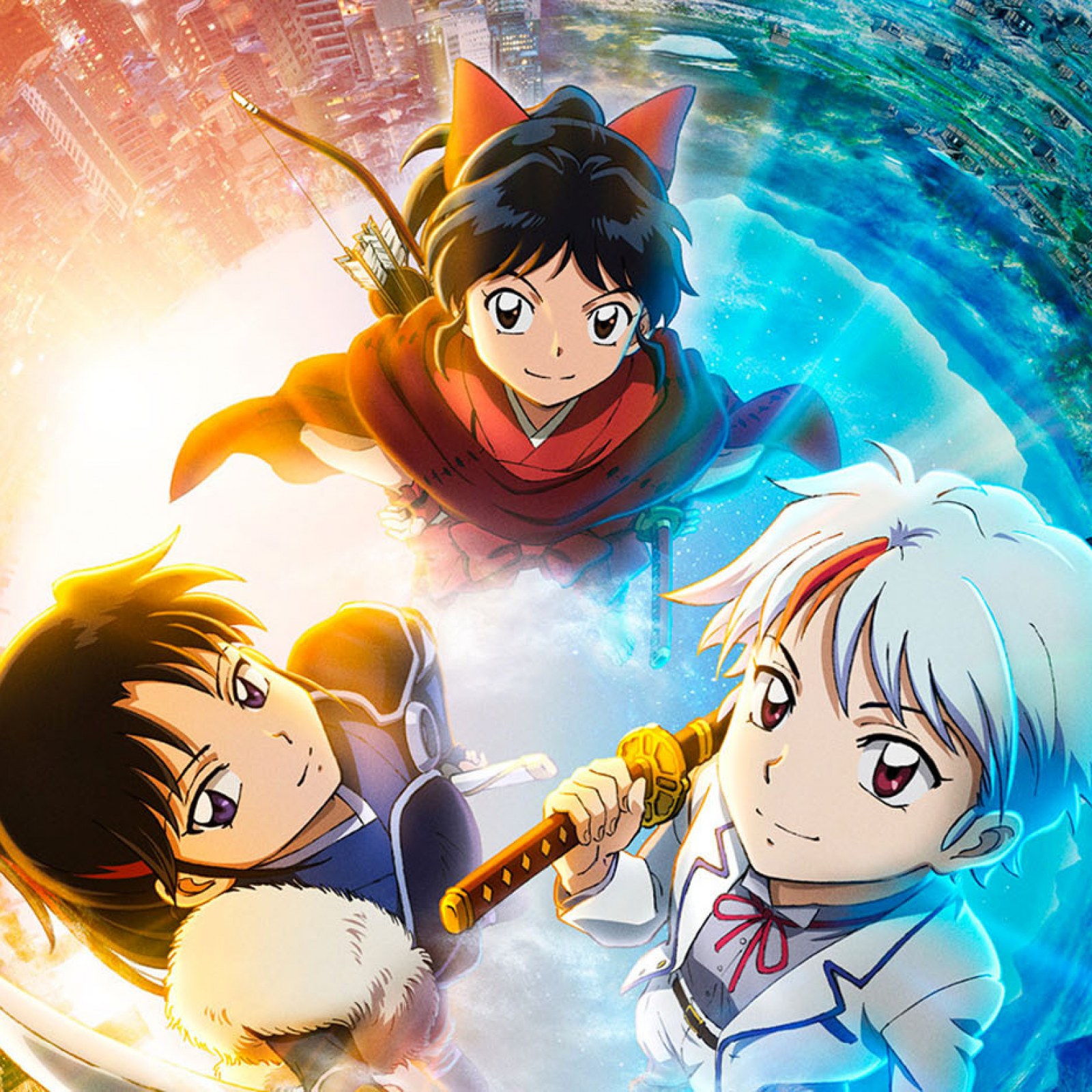
After ten long years, Towa is finally reunited with her sister Setsuna and is also introduced to their third-leading lady, Moroha, Inuyasha, and Kagome’s daughter. In the original series Kagome, at the age of fifteen, fell through a well located in her family’s shrine transporting her from present-day Toyko to the feudal era where she first meets Inuyasha. Our two main protagonists journey together alongside friends in search of gathering the “Sacred Jewel” fragments to destroy a common enemy named Naraku. During their journey, Kagome and Inuyasha’s feelings for one another vastly grew, ultimately bringing them together at the end of the series.
This was a big deal for fans of Inuyasha who had been patiently waiting for the day they would become husband and wife. Or at least, for the fans that shipped their relationship. But despite Kagome’s character development throughout the series, making her stronger and slightly more independent, her daughter Moroha and cousins Towa and Setsuna give a whole new meaning to the term “girl-power.”
Welcome To The Twenty-First Century
So far, the new series depicts the three protagonists as strong, resilient young women who don’t rely on much help. Besides having each other’s back, each girl possesses the ability to individually fight off any evil that comes their way without necessarily depending on the other. And it’s been proven that together they are a greater force to reckon with. The teamwork between this trio creates more enticing battle scenes and gives the fans a better appreciation of each other’s compassion and loyalty. It didn’t take long for these princesses to have each other’s back and steal the hearts of many Inuyasha fans rooting for more. They knew the best way to support other women is by killing any demon that tries to get their way, metaphorically and literally speaking.
In The Past
As a fan who followed the story of Inuyasha at a young age, it’s an incredible experience to see the creator of the series Rumiko Takahashi’s story progress in the right direction for equality. The series has always been portrayed in a feministic friendly way, featuring a few vigorous female protagonists: Kagome, Sango, and Kikyo. But did the original series go far enough in terms of equality and feminism? Kagome is a swift, pure-hearted priestess whose sympathy and love for others fuel her spiritual powers, making her a strong female lead in the show. Sango accompanies Kagome to defeat Naraku, being directly affected by his cruel and deceitful exploitations and losing her family in the process. Sango uses her demon-slaying boomerang and training to wield off enemies and help protect her friends and symbolizes yet another strong and capable character.
Being a secondary but important character, Kikyo is a resurrected priestess who possesses spiritual powers and, like Kagome, uses her scared bow and arrows to fight enemies that cross her path. Unfortunately for Kagome, she is constantly compared to Kikyo, being confirmed as her reincarnation from the future. They share many similarities, such as their physical appearance and genuine compassion and love for others, including their shared infatuation with Inuyasha. The love triangle and constant comparisons created some conflict between two of our three female leads. We want to think that the series is now long past when girls fighting over one indecisive boy are no longer normalized.
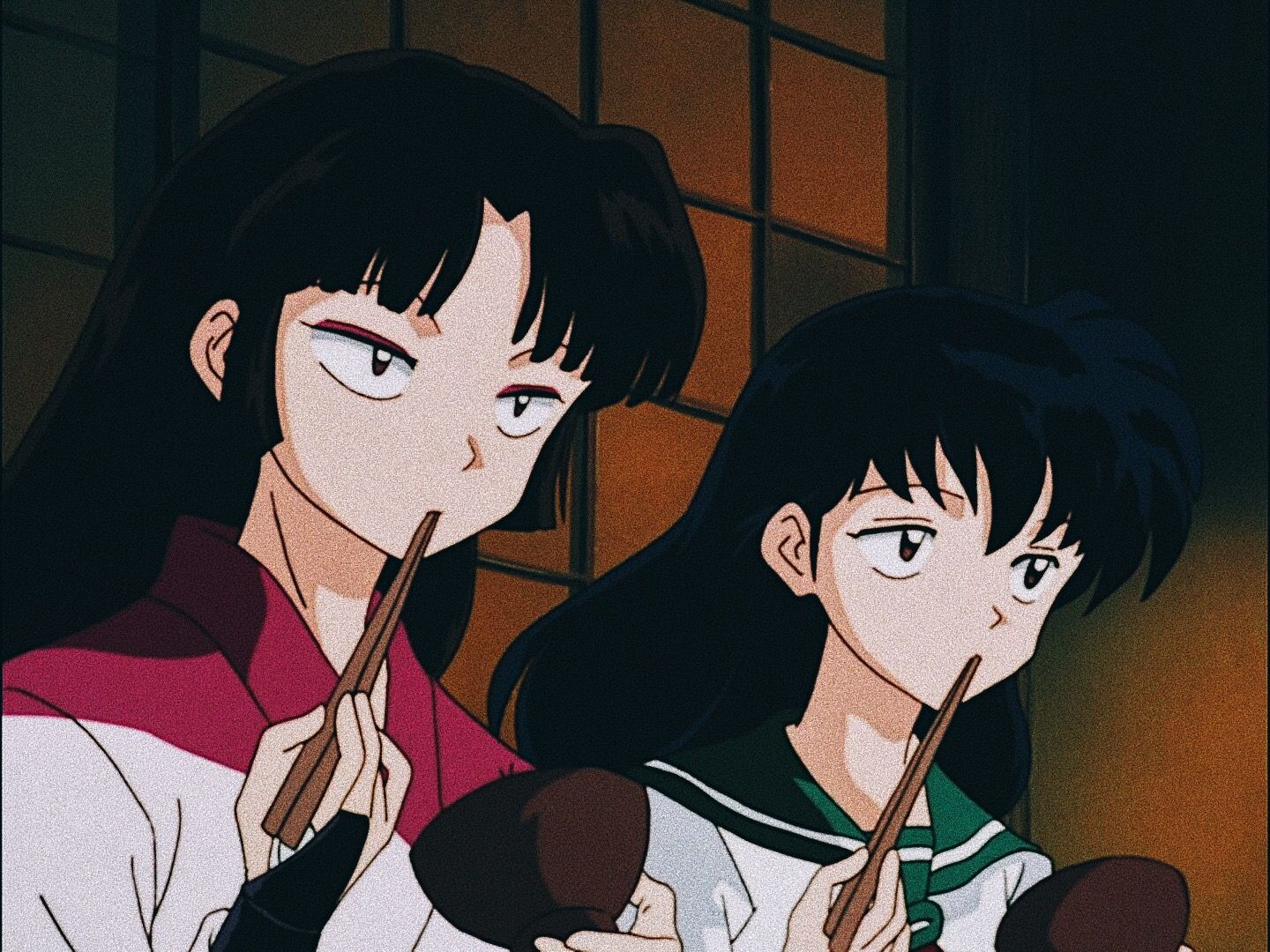
Before death, Kikyo and Inuyasha had also fallen in love with each other long before Kagome’s arrival. But tragically, Naraku had turned them against each other, ending in Kikyo’s demise. The show seems to romanticize Kikyo’s death as a sacrifice for her love of Inuyasha. Being one of the strongest characters in the show, this paints the wrong picture of Kikyo for fans that want to sympathize with her character but can’t because of her decision making and ulterior motives. This creates an idea that it’s acceptable to go to any length for another person, even if it causes you harm, and even slanders Kikyo’s reputation as a potential role model.
The Division Of Equality
Kagome is represented as an individual with powerful abilities that come from deep within her linage. Yet despite her appraises, Kagome relies on Inuyasha and others more than anyone else in the group. Her character is almost always put in a dangerous situation, only to be saved at the last possible moment by Inuyasha. This, too, is demeaned to be a romantic device implanted in the show to generate the hero saving the damsel in distress fantasy. This kind of message can also be toxic to young viewers who are more impressionable and believe they should be one or the other, the hero or the one in need of saving.
Not to mention the idea it puts in viewers’ minds that it’s alright to put yourself in dangerous situations for the people you love once again. This complex is embedded in the show to make Inuyasha’s character the night in shining armor and Kagome’s character, the helpless sweetheart whose always certain she’ll be safe because of her one true love. But is that kind of relationship anti-feminist and borderline harmful or just another part of a fantasy within a fantasy?
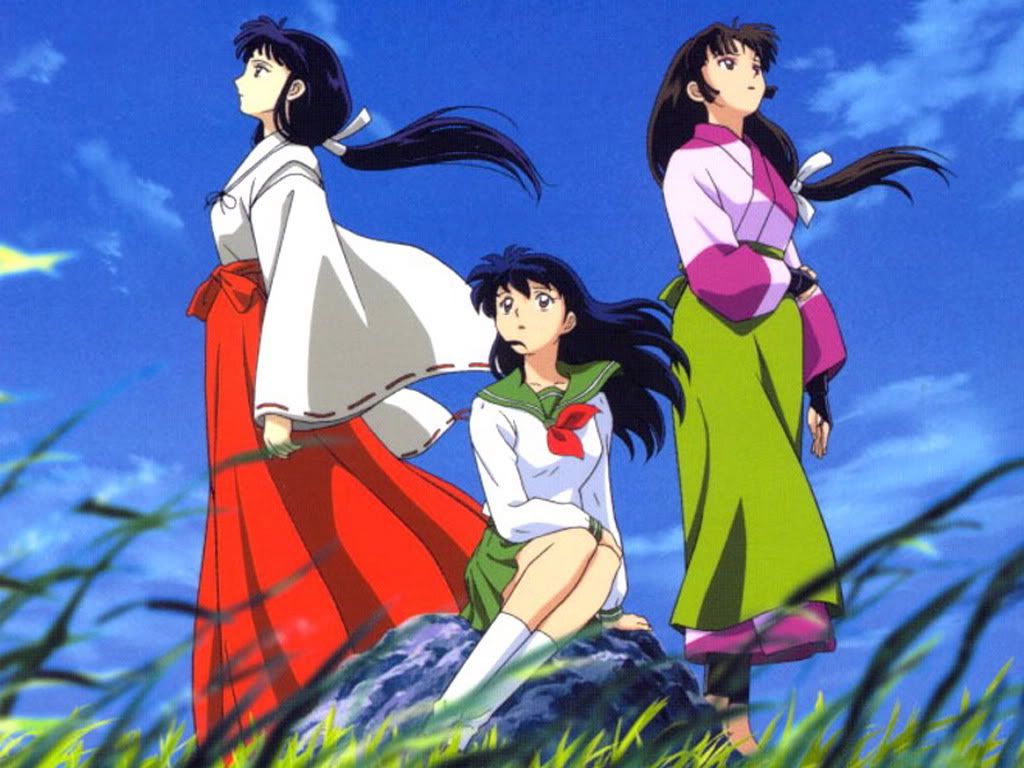
Sango is also the main character in the show with a powerful weapon and the ability to hold her own. But Sango’s problems do not lie within her capabilities but within the butting joke involving her and her companion, Miroku. Miroku is a seemingly ordinary Monk who travels with the group searching for their nemesis Naruko who placed a curse on his family’s male gene pool. But behind Miroku’s tragedies is an internal list of reasons why Miroku’s character is detrimental in the show. Sango, among Miroku’s many victims, is constantly touched and groped by him without her consent.
In return, Sango slaps Miroku, leaving a red handprint across his face that is implied to be comical. At the end of the series, Sango ends up marrying and starting a family with Miroku. And although his character does grow into a better man, does that still excuse the many instances we see him touch young women? And does this justify Sango’s ability to look past his perverted past, or is this too meant to be playful and harmless?
No Sexualization, Only Representation
Anime isn’t particularly known for its inclusion of feminism. One reason is that characters, primarily underage girls, are typically drawn in a way to make their physical features, both facial and body, appear older and more exaggerated. The three new protagonists, Towa, Setsuna, and Moroha, are all around fourteen years of age and are no exception to this stereotype.
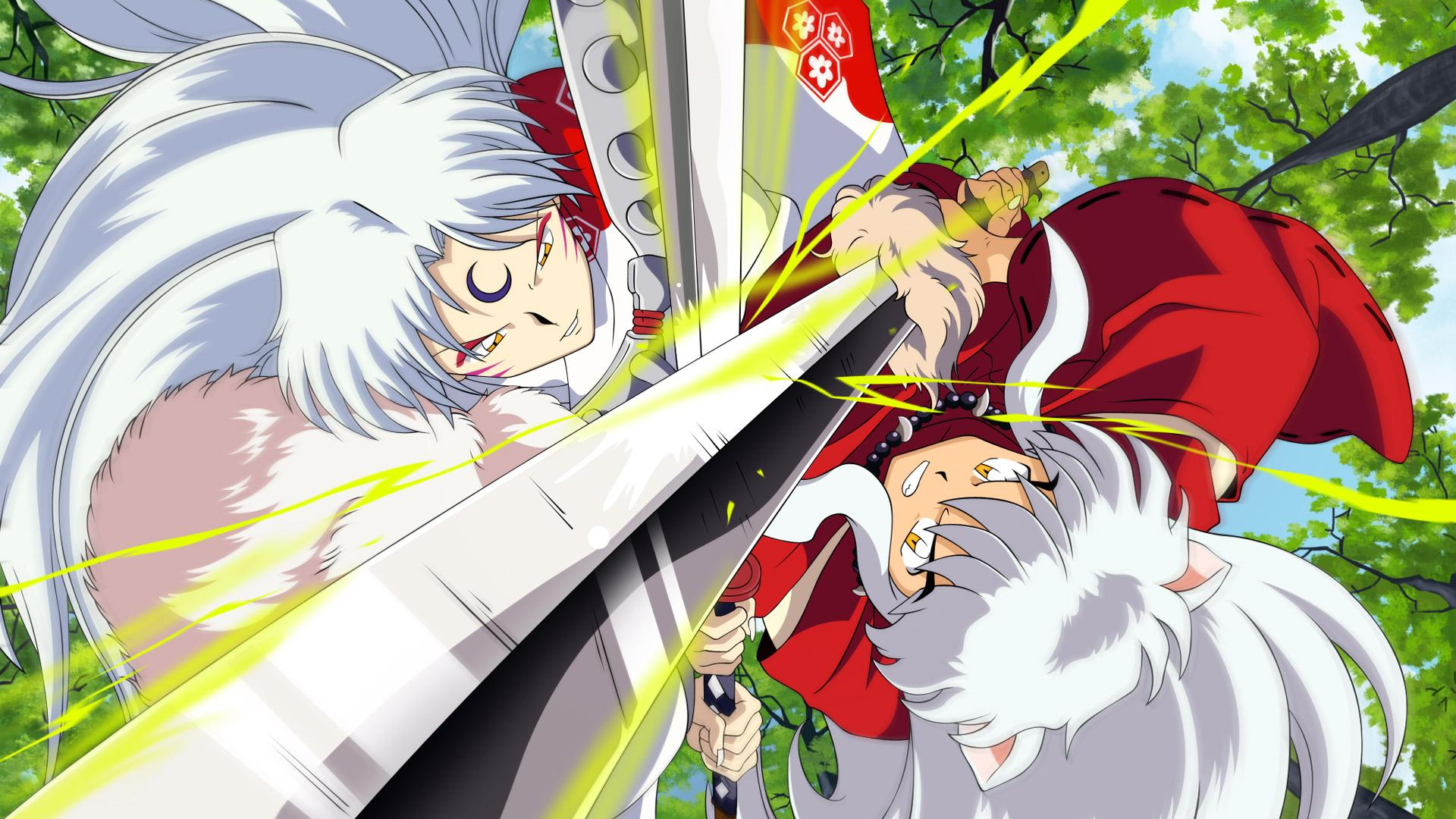
However, unlike the original series, the young girls aren’t dressed in short skirts or any sexualized clothing for that matter. The main character Towa wears a boy’s white school uniform that she claims is “easier to fight in.” Moroha wears similar clothing to that of her father Inuyasha and looks incredibly comfortable, stylish, and warm. And Setsuna rocks full body armor while also sporting a fur pelt on her shoulder like her father, Sesshomaru.
Their Bodies, Their Choice
Despite that any woman or person, no matter their age, can wear whatever they want, our new heroes wear what makes them comfortable. Towa’s school uniform empowers her and sends a message to young women everywhere. Her adopted father, Sota Higurashi, comments on her clothes and asks why she’s wearing a boy’s school uniform.
Her response is that she wants to wear them because they’re essentially easier to move around in, letting the audience know that Towa does things her way, not the way that society wants her to. Towa has even made it a point in her inner monologue to let us know that she doesn’t believe in “our world’s” gender norms. This a milestone for manga fans everywhere who need a fierce new role model with beliefs like Towas.
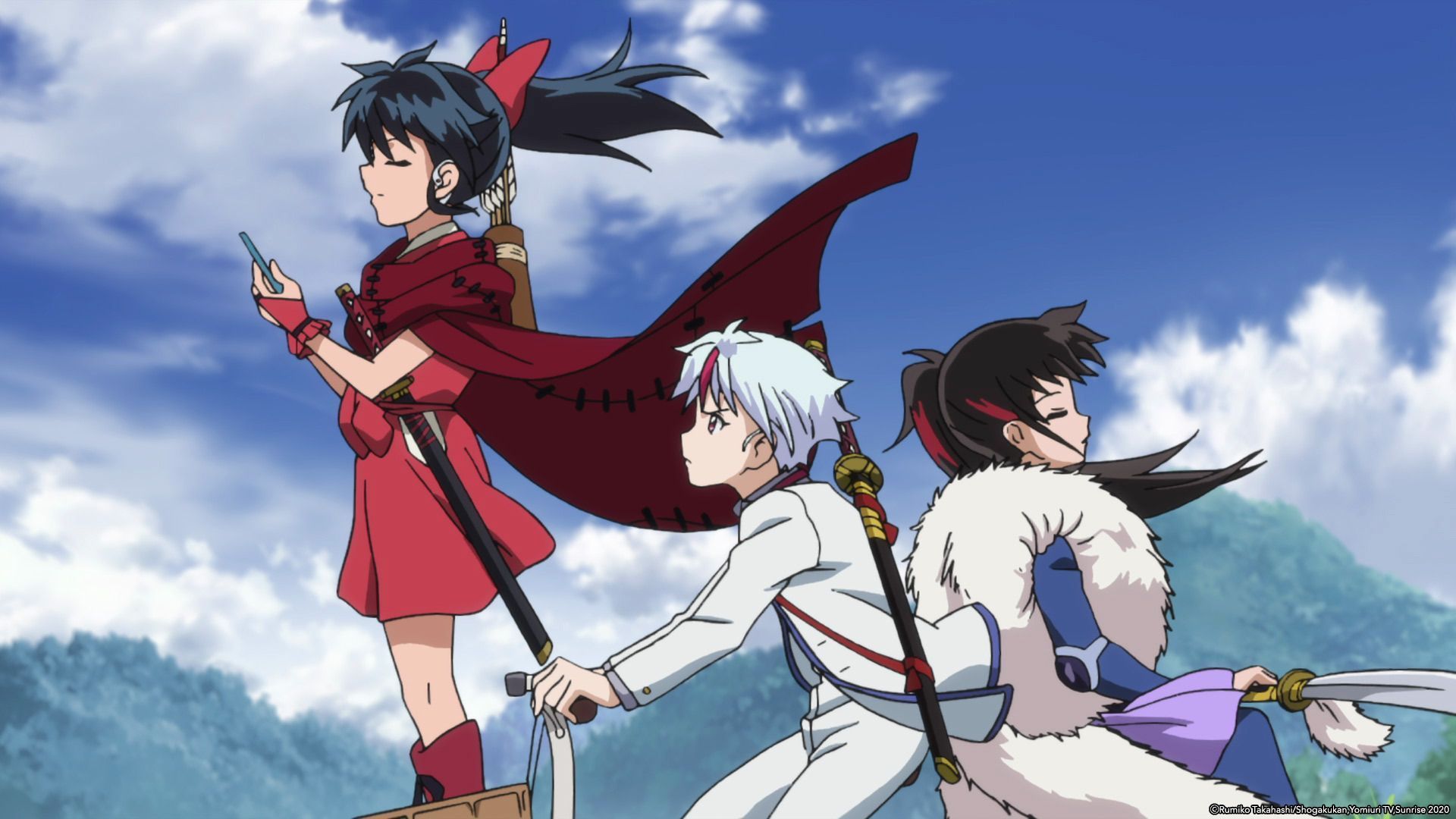
Since the start of the series, there has yet to be any sort of noticeable sexualization among the female characters. The only time there is nudity, Moroha has just finished bathing, and she’s quickly shielded from sight and not peeped on or uncomfortable in any way. This could be because no male main characters have been introduced into the series yet, but the hope is that this is the new norm for underage and of age women and men in all future anime.
Rewind back in time when Kagome first entered the show and was constantly ridiculed for her short skirt and tight clothing. She entered the show as a fifteen-year-old, yet she was constantly objectified and treated as an adult. Within the first couple of episodes, a man drawn to be more than twenty years older than her lifted her skirt while she was tied up in his company, making her vulnerable and uncomfortable. She’s also seen in the first season bathing more than once with shots panned in on her breasts. Miroku (no shocker) even commented on her breasts’ size while spying on her as she soaked in a hot spring by herself. This being a vulnerable state for any woman, especially an underage girl, makes the scene even that much more uncomfortable.
A New Generation Built On Feminism
The premise for the original series might have its controversies, but it’s hard to argue that the characters more than helped paved a way for this newer and more progressive generation. Kagome and Inuyasha truly did love each other and fought hard to have their happy ending. It’s no surprise their daughter Moroha turned out to be a tough and charming big-mouth with an immense amount of heart and fire inside her. Sesshomaru’s daughters Towa and Setsuna, are also internally strong and gifted, just like their father.
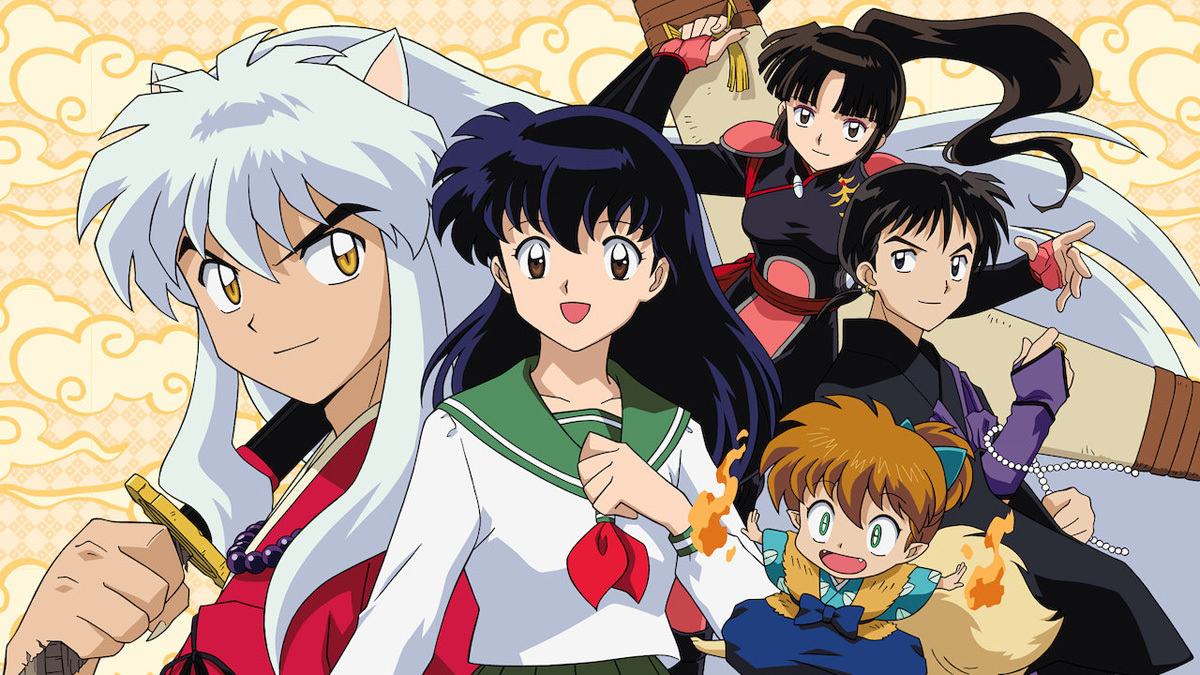
Although their mother has yet to be confirmed, from what the fans are gathering and if she is who we think she is, it will explain why they are also half-human and naturally loving and dependable. At the end of Inuyasha: The Final Act, there is no character’s story left untied. We watch as Kagome reaches her full potential and chooses to follow her heart and stay strong beside her friends and Inuyasha in feudal Japan. Sango also may choose to be with Miroku, looking past his previous lecherous ways, but she still turns out to be an even better, happier version of herself in the end. Kikyo is finally resting peacefully after receiving the closure with Inuyasha that she longed for.
Kagome and Kikyo were originally pitted against each other. But after time, Kagome accepted Inuyasha’s past and even fought to save Kikyo’s life on two occasions. This brought them closer and ended the tension between the two. It was the closure they needed to fully heal their hearts. Kikyo eventually accepted Kagome’s future with Inuyasha, after being jealous at first that Kagome had what she could never hope to regain. It was the end of a senseless internal battle between two women who literally shared one soul and the start of a stronger female bond.
What’s Next For Our Heroes?
With the new series only just beginning, what will be next for our tremendous trio? Fans have definitely expressed their desire to include old characters that haven’t come into the storyline quite yet. In the first episode of the series, Towa is engaged in a story that foreshadows the beginning of her story in Yashahime: Princess Half-Demon. The tale captures a day long before she was born when Inuyasha and the gang fought off a demon together.
This story gave us hope that Inuyasha and the others would be tangled up in the girl’s future journeys. But so far, we’ve received almost no indication that Kagome, Sango, Inuyasha, or the others will be joining our feminist characters. However, it has been teased that Sesshomaru will be taking a bigger role in the storyline in the girl’s future. Towa and Setsuna have never met their father or mother, and the fans are still unclear of why that is. Moroha has also been deprived of knowing her parents and has expressed how lonely it’s been for her before meeting her cousins.
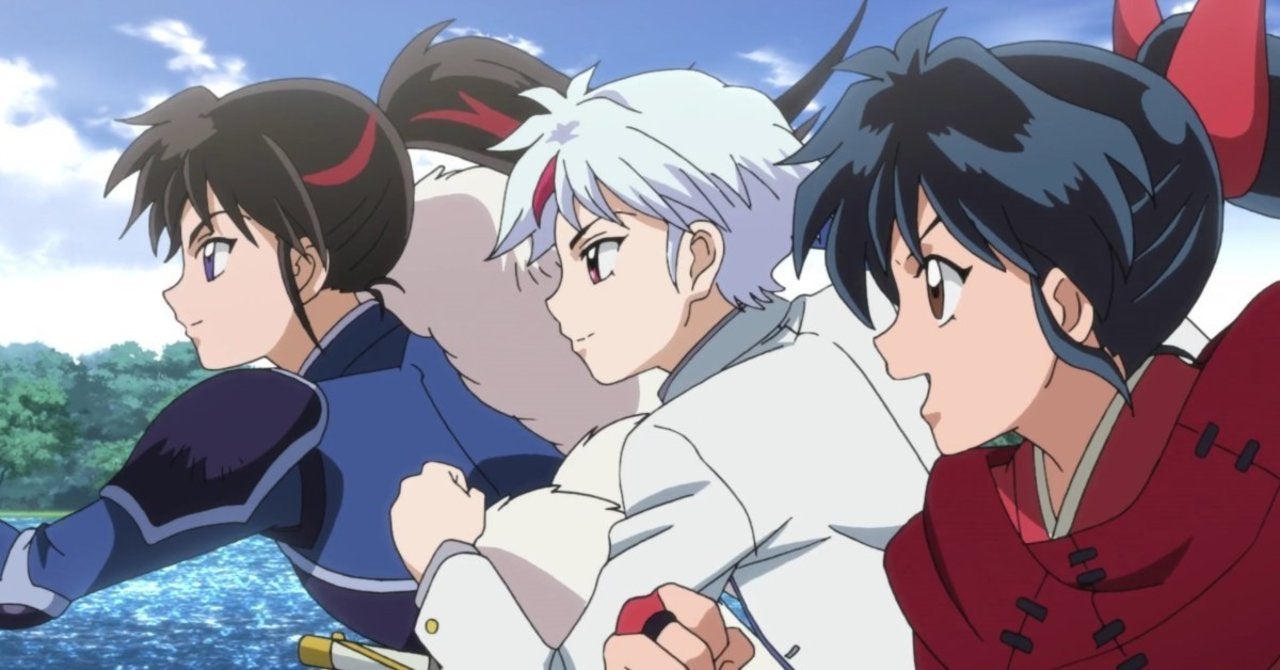
People are curious if Kagome is still alive and, if so, where is she and Inuyasha? Why does Sesshomaru not greet his daughters? And who is Towa and Setsuna’s mother? An even bigger question might be: just what else are these three capable of next? Besides opening the door to stronger possibilities for fans of all ages and genders, these three protagonists have a lot more growing and inspiring to do. Most fans are hopeful that Towa’s and Setsuna’s relationship will blossom as sisters to unite their group and become even more formidable.
Fans wonder if the newer series will follow in the old series footsteps, creating multiple love stories along their journey. Will other progressive doors be opened regarding Towa’s hints to her sexuality? Will more strong, leading female characters enter our fandom and guide our trio down the right path? There is much to be uncovered shortly. I guess we’ll have to wait in suspense and see.
